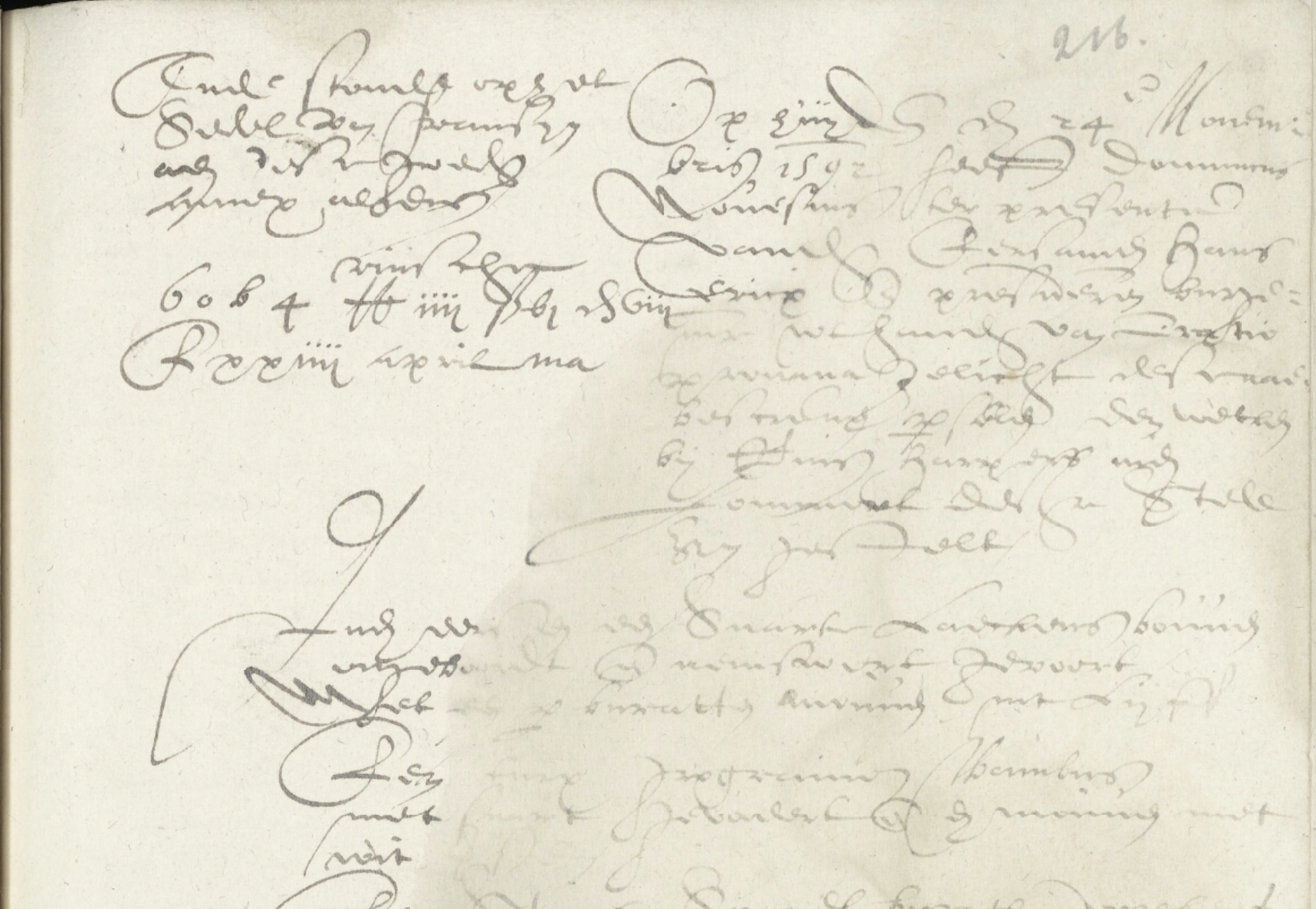Last week, I wrote a post about using handwritten text recognition software to automatically transcribe records. Several people have asked me if and how I use AI for my business, so I thought I would clarify.
Handwritten text recognition technology
I use handwritten text recognition technology for my personal research and client projects.
For one client, Roberta Estes of DNA Explained, I traced a line back to Harlingen, Friesland in the early 1600s. There were earlier records available, but they were unindexed and hard to read in places. I would probably have been browsing the records for days to have a chance of finding something relevant, which would not be an efficient use of the client’s budget. Instead, I wrote a script to download images of Harlingen court records in the 1500s and then let Loghi transcribe them. I downloaded about 2000 images, containing some 3500 pages of hard-to-read court records. I discussed this approach with the client first, and she was excited to give it a try. The records were older than what Loghi was trained for, but it still did a decent job. It allowed me to discover three new records for the brick wall ancestor that I would not have found otherwise, and to add another generation to Roberta’s tree.
I use this technology only to find records, not to do the actual research or do the final transcriptions. I read the discovered original records myself, write my own abstracts/transcriptions/translations (depending on the project), and do my own analysis. There is no risk of AI errors this way. It might miss some records (if the text is not recognized correctly), but I would not have found them otherwise anyway.

Example of a record that Loghi made searchable
This is only possible if I have scans of the records. Many Dutch archives are digitizing the most-used records and making the scans available online as open data. Downloading images from archives is legal in the Netherlands. We have a law that allows people to reuse public government information for any purpose. I make sure to do it in a way that does not put too much stress on the website. Bulk downloading is not possible on all websites though, so this is not something I can do myself for every place. In those cases, I have to submit a formal request for the images, and that can take a while.
ChatGPT
I sometimes use ChatGPT to help with programming tasks and generate ideas, for example for blog posts or sub topics for a presentation. I do not let ChatGPT do the actual writing; that is all me. ChatGPT also helps me with Excel formulas sometimes for data analysis for my master’s dissertation.
In one case, I used ChatGPT to summarize a large German text to see if it was relevant for me to take the time to read the whole thing. I can read German but am not as quickly as Dutch or English. This approach allowed me to target relevant sections to read for myself.
For more examples of how I tried to use ChatGPT, see my post about Five Good and Bad Ways to Use ChatGPT for Genealogy.
AI as my virtual assistant
I love using AI this way. I still do all the interpretations myself, but use AI as a virtual assistant to help me work more efficiently. Between the freely available Dutch records and trained handwritten text recognition software, I feel like I’m living in 2123!


AS Yvette says, AI is only a tool. An early example of testing AI to do translations was to translate a phrase from English into Russian and back again. When they used the phrase “The spirit was willing but the flesh was weak”, their system returned the phrase “The vodka was good but the meat was bad”.
I have known that example for a long time, but that was not AI but machine translation.
This makes me wish I hade Dutch ancestors so I could hire you!